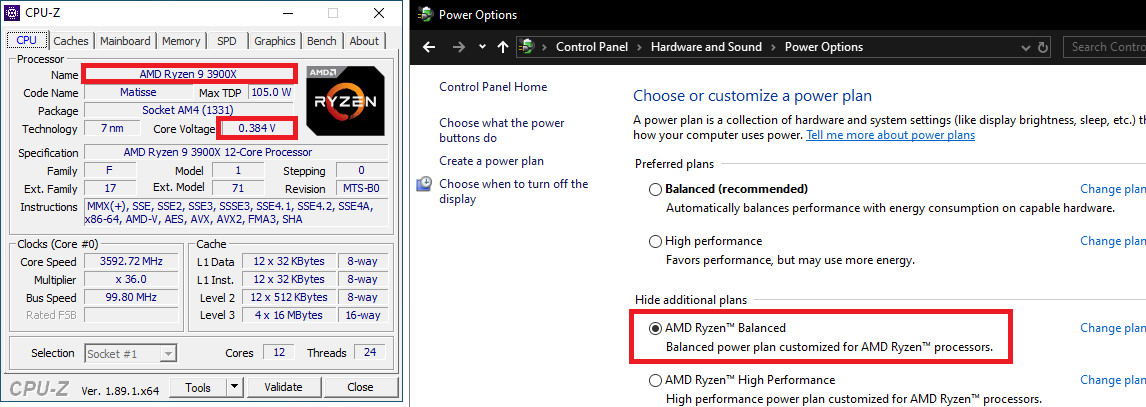What
@tabascosauz said about AGESA versions is right...
1003-ABBA fixed the lower boosting issue and staying to ABB just for PCI-E 4.0 is not woth it.
Additionally ZEN2 is very temp sensitive regarding sustainable boosts (all core and single).
Really these chips are so complex and advanced that a static clock voltage is a killer deal (not in the good way). Do not confuse ZEN2 with ZEN/ZEN+ parts. They have similar features and behaviour up to a point. Further more ZEN2 is something entirely new in a lot of ways.
You need AGESA 1.0.0.3_ABBA or 1.0.0.4_B for the CPU to give the best by AMD and still there is room for "improvement" = with lower Temp + PBO settings with out static values.
ZEN2 needs cooling. I saw a sustainable +25~30MHz (eff clock) increase in all core boost by a 5C max temp reduction (63 > 58) by changing TIM. And another +25~30MHz (eff clock) from manually setting PBO to custom for PPT/EDC and PBO scalar. This increase temp by 3C again to ~61C. Overall clock increase 50~75MHz (50~60MHz on effective clock).
And this benefits the CPU across boost range (from base clock up to single core) but the max is for all core, the min for single (slightly more sustained), and medium gains for medium loads like gaming.
My CPU is rated for 88Watt PPT (65Watt TDP) max draw (actual value = 87.5W PPT from HWiNFO64 sensors mode) like the 3700X. Now, after messing with PBO its on 92~93W PPT with +50~60MHz eff clock. If I could drop it to <50C I would gain another 50~75MHz all core. Rated boost comes with the right AGESA(under 75C) and PBO with additional cooling (max at 50C).
By using static OC and voltage you most likely (not sure) cancelling the FIT controller of the chip and that is not good (silicon FITness controller). This controls PrecisionBoost and PBO by regulating clock, voltage, power draw in conjunction with temp.
1. Idle/low load voltage is perfectly fine at 1.45~1.50V depending the CPU type. Mine is at 1.475 max. High voltage on low current is not hurting the CPU. It is designed like this for reasons...
2. What was the temperature during this P95 run?
3. You need AGESA 1003ABBA/1004B to hit rated boost.
4. You want a static OC just for burn tests? You are hurting performance in 99% of cases on real life apps/games.
Can you please provide a screenshot of HWiNFO64 sensors mode(expanded) with:
1. During CB-R20
2. During P95
...like this below with no static OC. In order to make it easy for me to see some things just open both CB and that sensors window. Start CB run and then after it starts filling squares hit the clock button in the window below (down right), to reset values and time. Wait 45~50 sec and before it ends hit Ctrl+PrtScr while the HWiNFO window is selected... again like below.
Columns are multiply with blue arrows (down left).
What matters in that screenshot is the average values of: clock, average eff clock, core VIDs, CPU temps, PPT/TDC/EDC.
View attachment 141645
Additionally you can do the same with static OC.








